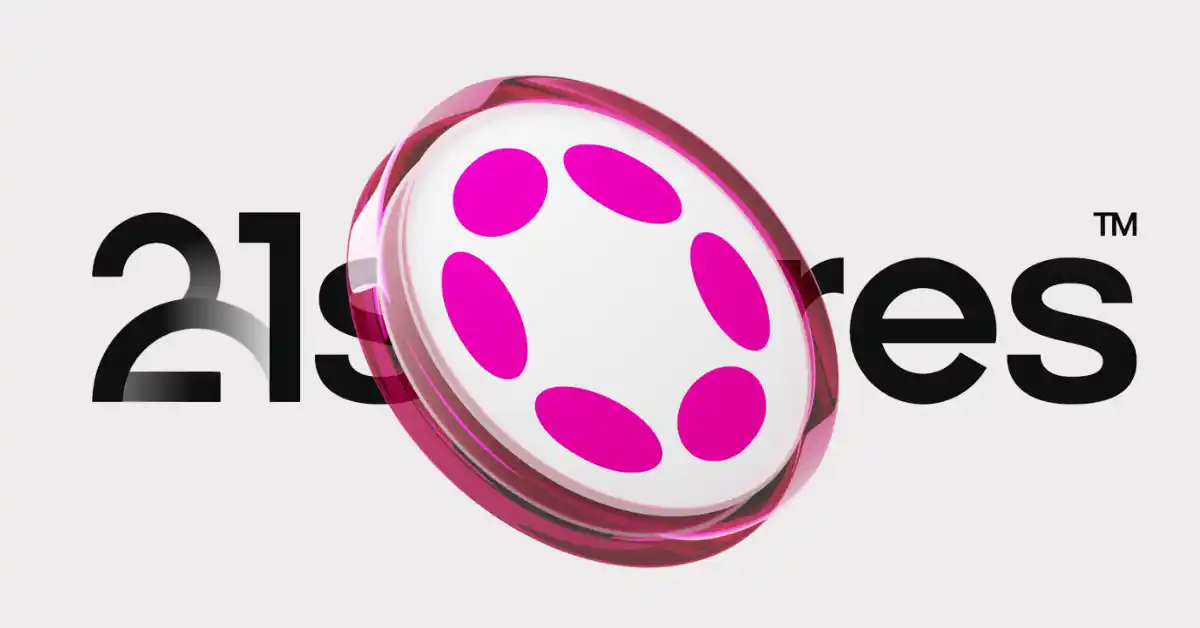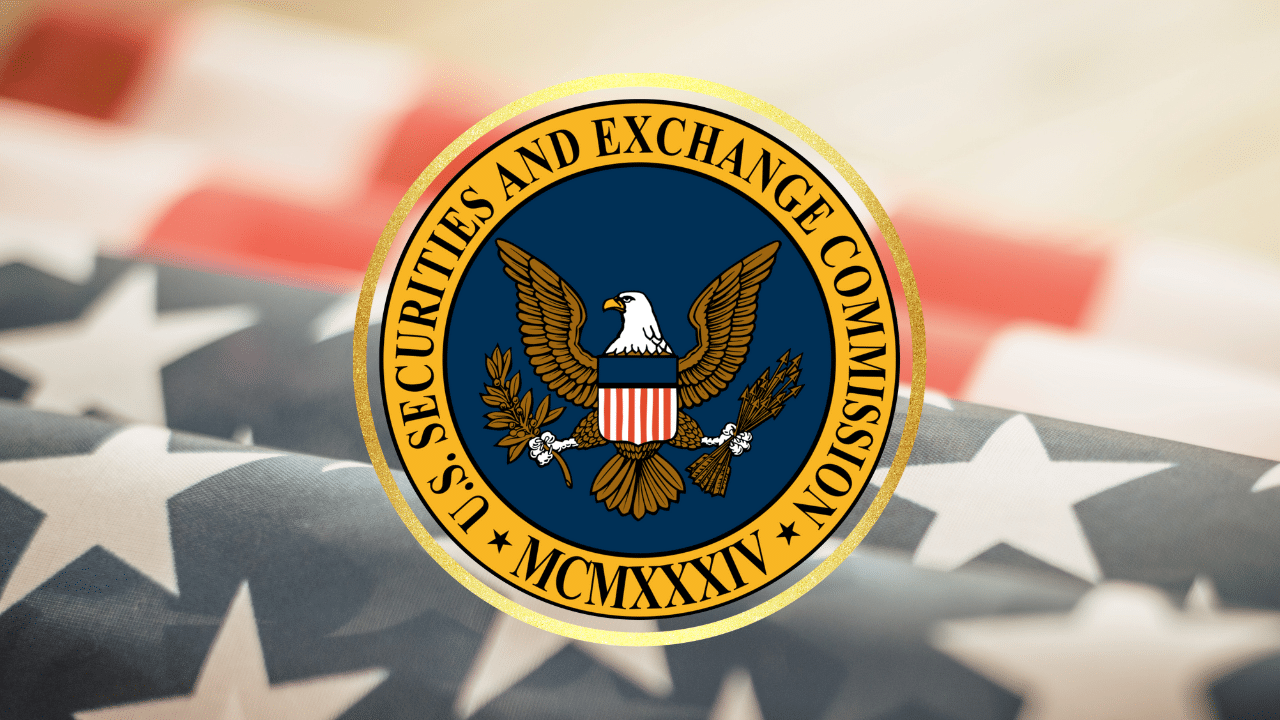In recent years, the cryptocurrency market is accelerating towards mainstreaming, and the launch of ETFs (Exchange Traded Funds) is undoubtedly an important driving force for this process. From BTC to ETH, the successive approval of spot ETFs has not only opened up a channel for traditional investors to enter the market in compliance, but also attracted a large influx of institutional funds, accelerating the integration of crypto assets with traditional financial markets.
Today, Polkadot, as one of the most watched public chains, has also ushered in a wave of ETF applications. Since 2025, well-known financial institutions such as Grayscale and 21Shares have successively submitted Polkadot ETF applications to the U.S. Securities and Exchange Commission (SEC), striving to provide investors with a more convenient way to invest in DOT. On March 8, the SEC confirmed the acceptance of the 19b-4 application submitted by Grayscale; on March 21, 21Shares' Polkadot spot ETF application was also confirmed by the SEC, and both are currently under review.
This series of developments not only attracted widespread attention from the market, but also raised deeper questions: What does Polkadot ETF mean? Why are major institutions scrambling to make plans? If approved, how will it affect the Web3 market? This article will focus on these issues and deeply analyze the logic behind Polkadot ETF and its future development trends.

What is the Polkadot ETF?
The Polkadot ETF is an exchange-traded fund that tracks the price performance of Polkadot (DOT) and is designed to provide traditional investors with a compliant channel to gain market exposure without directly holding DOT. The ETF allows investors to trade DOT's price performance through traditional securities accounts without having to manage cryptocurrency wallets, private keys, or perform on-chain transfers. The underlying assets of the ETF are managed by Coinbase Custody, which uses cold storage and multi-signature technology to ensure the security of DOT.
The ETF is priced based on the CME CF Polkadot-Dollar reference rate, which is calculated by CF Benchmarks Ltd. The data is sourced from multiple mainstream DOT trading platforms and is linked to the CME futures market. This pricing mechanism helps ensure the price transparency of the ETF and meet SEC regulatory requirements. The Polkadot ETF follows the listing rules of the Nasdaq Exchange and adopts a cash subscription and redemption model (investors purchase or redeem ETF shares in cash), avoiding the uncertainty of on-chain asset delivery and making the investment process more standardized.
From a technical perspective, the DOT that Polkadot ETF relies on has unique advantages. DOT supports the cross-chain interoperability of the Polkadot ecosystem (such as data and asset interaction between parallel chains) and allows holders to participate in protocol decision-making through on-chain governance mechanisms. The launch of ETFs can lower the investment threshold of DOT, especially for large institutional investors such as funds and pension funds. ETFs may be a safer and more viable investment option.
As more and more institutions enter the market, Polkadot ETF is expected to become another important milestone in the crypto market. If approved, Polkadot ETF will become the first compliant financial product based on cross-chain protocol tokens, which will not only help enhance the market liquidity of DOT and improve its market recognition, but may also pave the way for similar products of other non-mainstream tokens (such as Solana and Cardano), accelerating the process of integrating crypto assets into the traditional financial system.

Polkadot ETF Application Timeline 2025
Currently, 21Shares and Grayscale are the main institutions applying for Polkadot spot ETFs.
February 1: 21Shares submitted an S-1 application to the SEC, planning to launch a Polkadot spot ETF, which will be managed by Coinbase Custody.
February 25: Nasdaq submitted a 19b-4 application to the SEC on behalf of Grayscale to list the Grayscale Polkadot Trust.
March 8: The SEC confirms Grayscale’s 19b-4 filing.
March 18: Nasdaq submits 19b-4 application for Polkadot ETF for 21Shares, with the benchmark being the CME CF Polkadot Index.
March 21: SEC confirms 21Shares Polkadot spot ETF application.
⚠️ Note: The SEC needs to decide whether to approve, reject or extend the review period within 45 days of receiving the application. If the SEC believes that further review is necessary, it can further extend the decision period by up to 240 days (usually extended in increments of 90 days, 60 days, and 30 days).

Why does 21Shares bet on Polkadot ETF?
The core motivation of 21Shares in applying for Polkadot ETF is to build a compliant and secure bridge for traditional investors to participate in the DOT market without direct exposure to cryptocurrency technology. The ETF aims to provide an indirect investment channel for DOT through traditional securities accounts, reduce technical barriers and operational risks, and increase the availability of DOT in the mainstream financial market.
Unlike directly holding DOT, ETFs adopt a fully custodial model, with Coinbase Custody responsible for the storage of DOT, and using cold storage and multi-signature technology to avoid the risk of private key loss or exchange hacker attacks. In addition, ETFs use a cash subscription and redemption mechanism. Investors do not need to directly purchase or hold DOT, but instead subscribe to ETF shares through cash, and the fund manager buys DOT in the spot market to ensure the convenience and compliance of transactions.
In terms of compliance, the ETF plans to be listed on the Nasdaq and follow the SEC's disclosure rules, relying on the CME CF Polkadot-Dollar reference price as a pricing benchmark, while sharing market monitoring data with Coinbase Derivatives to enhance transaction transparency and anti-manipulation capabilities. This model is in line with the Bitcoin and Ethereum ETFs previously launched by 21Shares, aiming to integrate crypto assets into the traditional financial framework, provide institutional investors with regulated investment tools, and promote DOT to enter the broader capital market.

Core advantages of DOT as an ETF asset
Cross-chain interoperability and scalability
Polkadot adopts a heterogeneous multi-chain architecture, allowing seamless interaction of data and assets between different blockchains (such as parachains). This architecture improves the scalability of the entire blockchain ecosystem, making Polkadot an important infrastructure for Web3 interoperability. As the core asset of the Polkadot ecosystem, DOT supports cross-chain communication of the network, enabling applications on different chains to work together. This function of DOT is directly related to its market value, as the growth in demand for cross-chain interactions may push up the usage rate of Tokens. This technical advantage gives DOT a unique position in the public chain ecosystem and provides strong support for it to become an ETF asset.
Decentralized governance enhances network flexibility
Polkadot adopts a decentralized governance mechanism, and DOT holders can decide on key matters such as protocol upgrades and network parameter adjustments through on-chain voting. Compared with public chains that rely on core team decisions, Polkadot's governance model gives the community stronger decision-making power, enabling the network to adapt to changes in market demand. This mechanism reduces the risk of centralized intervention and enhances the network's anti-fragility. Although ETF investors will not directly participate in on-chain governance, this decentralized mechanism improves the market stability of DOT, making it a more mature and sustainable investment target.

The complementarity between pledge mechanism and ETF
Although DOT's staking function (based on the NPoS mechanism) is one of its technical advantages, 21shares clearly pointed out in the application document that ETFs cannot directly participate in staking due to compliance restrictions. This contradiction highlights the rationality of ETFs: if ordinary investors directly hold DOT and participate in staking, they need to undertake complex operations such as private key management and transaction verification node selection, while ETFs circumvent such technical barriers through a fully custodial model (such as Coinbase Custody's cold storage). At the same time, the existence of the staking mechanism strengthens the scarcity of DOT (some tokens are locked), which may indirectly improve its market price stability and make the underlying assets of ETFs more attractive for investment.
Comply with SEC regulatory requirements
From a regulatory compliance perspective, the ETF structure meets the SEC's requirements for "anti-manipulation markets." The DOT spot price is highly correlated with the CME DOT futures price (based on historical data analysis), which means that regulators can indirectly cover spot market trading risks by monitoring the futures market, thereby improving market transparency. In addition, the ETF adopts a cash subscription and redemption model, which avoids the uncertainty of on-chain asset delivery, makes the investment process more standardized, and meets the compliance needs of institutional investors.

Lower investment threshold and higher liquidity
ETFs allow investors to invest in DOT's price performance through traditional stock accounts without having to register a crypto exchange account or operate on-chain asset management tools. This model lowers the threshold for traditional investors to enter the DOT market and is in line with their investment habits. The market maker mechanism in the secondary market can provide liquidity similar to that of stocks. Especially when the market fluctuates, the centralized trading structure of ETFs has more efficiency advantages than decentralized cryptocurrency exchanges.
What changes and opportunities will the Polkadot ETF bring ?
Improve the market acceptance of DOT
The approval of the ETF means that DOT will officially enter a wider investment market, especially for traditional investors who are on the sidelines of crypto assets. The launch of compliant ETFs lowers the investment threshold, allowing investors to easily obtain DOT exposure through securities accounts without directly managing private keys or exchange accounts. This not only attracts institutional funds to enter the market, but also provides ordinary retail investors with a safer and more compliant investment channel, thereby enhancing the recognition of DOT in the mainstream financial system.
In addition, the launch of the ETF may further increase the market attention of the Polkadot ecosystem, attract more developers to join its cross-chain network, accelerate the implementation of key applications such as parachains, and promote the prosperity and development of the entire ecosystem.

Attract institutional capital inflows
The approval of ETFs will bring more institutional investors to DOT, such as hedge funds, pensions, and family offices. These institutions are usually subject to strict compliance requirements and find it difficult to invest directly in cryptocurrencies. ETFs provide a compliant investment channel that enables them to allocate DOT assets within a framework that meets regulatory requirements.
At the same time, ETFs also lower the entry barriers for investors who are deterred by technical complexity or security issues, further expanding the audience of DOT as an investment target. With the influx of institutional funds, the market depth and liquidity of DOT are expected to be improved, and the overall maturity and confidence of the market will be improved. In addition, the Polkadot ecosystem may further optimize network performance to support larger-scale capital flows and lay the foundation for broader financial applications in the future.
Accelerate the process of industry compliance
The approval of ETFs needs to meet strict regulatory requirements, which may prompt the entire Polkadot ecosystem to develop in a more compliant direction. For example, in key links such as custody, trading, and clearing, more transparent mechanisms that meet traditional financial market standards may be introduced to meet the requirements of regulators.
In addition, the approval of the ETF may trigger a reassessment of the regulatory framework for crypto assets in more regions around the world, provide a reference standard for the compliance of DOT and other Web3 projects, and promote the development of the entire industry in a healthy and sustainable direction. It is worth noting that 21Shares hinted in the application that it may explore integrated staking income or leveraged ETF products in the future, but this still depends on the further clarification of the regulatory framework. If launched, it will greatly enhance the attractiveness of ETFs.
Impact on other Web3 assets
If the Polkadot ETF is approved, it may provide an important reference for the compliance path of other non-mainstream tokens, especially those projects with decentralized governance and strong technical support. Previously, the successful implementation of Bitcoin and Ethereum ETFs has boosted the market's expectations for other cryptocurrency ETFs. If the DOT ETF passes the SEC review, it will verify the compliance feasibility of tokens in niche tracks such as cross-chain assets, thereby paving the way for similar projects such as Solana and Cardano to apply for ETFs.
In addition, the approval of ETFs may accelerate the penetration of traditional funds into the crypto market and push more non-mainstream tokens into the mainstream through regulated products, but this process still needs to meet the SEC's recognition standards for "anti-manipulation markets" and the actual value support of the project's own technology.

Conclusion
The launch of Polkadot ETF is not only an important milestone in the development of DOT ecosystem, but also represents that cross-chain technology is accelerating its integration into the global financial system. As the attention of institutional investors continues to increase, ETF will provide DOT with a more compliant and efficient investment channel, further enhancing market liquidity and recognition.
This process will not only help the prosperity and development of the Polkadot ecosystem, but also lay the foundation for the compliance of the entire Web3 industry. In the future, as the ETF progresses, we are expected to witness greater breakthroughs for DOT in the global capital market.














